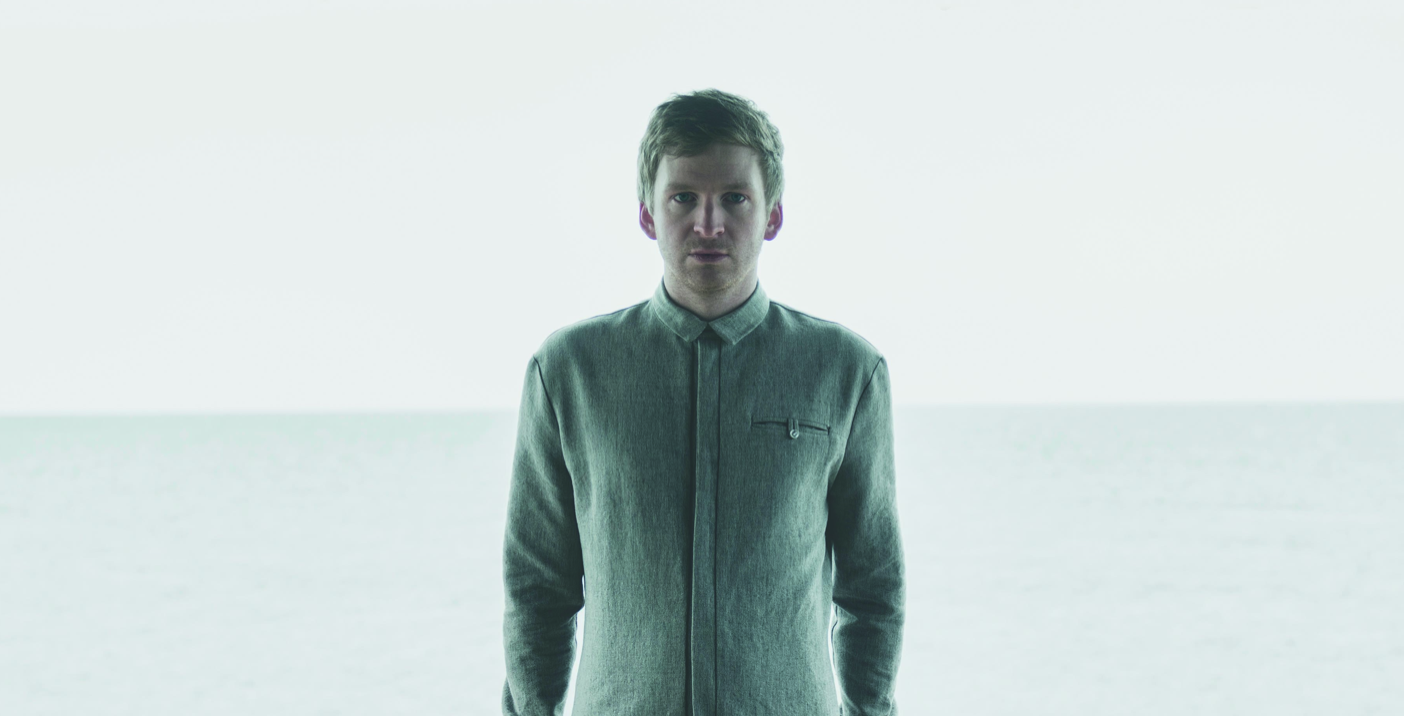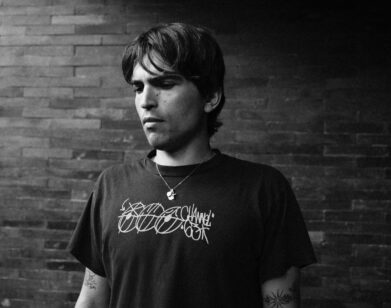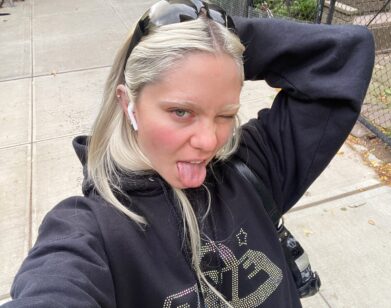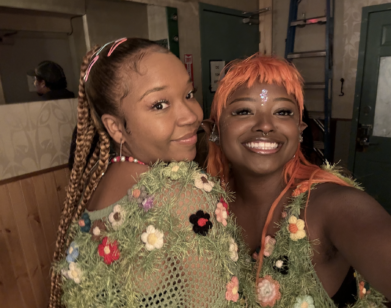Ã?lafur Arnalds, For Now

ABOVE: ÓLAFUR ARNALDS. IMAGE COURTESY OF MARINO THORLACIUS/MERCURY CLASSICS
At 25, Icelandic multi-instrumentalist Ólafur Arnalds has already accomplished more than many musicians do in a lifetime. For Now I Am Winter, out today and streaming below, is his third full-length studio album; he’s also released five EPs, scored a ballet, a TV show, and several films, and played for metal bands including Heaven Shall Burn. As soon as he starts to get comfortable in one mode, he picks up another challenge—which is what gave rise to his 2009 and 2011 projects Found Songs and Living Room Songs, each of which entailed composing, editing, and recording a song each day for a week and releasing the seven resulting tracks as a complete EP.
One of the things Arnalds’ fans like best about him, then, is that his next move is consistently hard to predict; but For Now I Am Winter is a bit of a surprise even by these standards. At first blush, it sounds like pure Arnalds—compositions that blur the line between what you’d call neo-classical and post-rock, albeit with a lot more electronic elements and a new, refreshing, Final Fantasy-esque freneticism to the string arrangements. But then, three tracks in, comes something truly unexpected: vocals, courtesy of Arnalds’ friend Arnór Dan Arnársson, best known as the lead singer for the band Agent Fresco.
We spoke with Arnalds a few months ago about the unexpected directions For Now I Am Winter—and his career at large—have taken, and have yet to take.
ALEXANDRIA SYMONDS: You’ve been going to a lot of awards shows lately, right? You did the Icelandic Music Awards last night.
ÓLAFUR ARNALDS: Well, I was just presenting an award.
SYMONDS: How’d it go?
ARNALDS: Events can be a little boring, but yeah, it was fine. I said my words, and I gave my award without dropping the thing to the floor.
SYMONDS: [laughs] You went to the BAFTAs, too. Do you enjoy wearing the tuxedo and all that?
ARNALDS: I like wearing a tuxedo, but I don’t fit in very well at these events. [both laugh] I don’t feel at home. Let’s put it that way. [laughs]
SYMONDS: I’ve been listening to your album nonstop since I got it.
ARNALDS: Thank you.
SYMONDS: I would love to talk about the ways you’ve shifted since your last studio album, …and they have escaped the weight of darkness. It seems like you’re more interested in electronics than you were in 2010. How has that process evolved?
ARNALDS: I was becoming very interested in 2010. I remember, when I was working on that album was the time when I was just starting to get into synthesizers. I did incorporate them a tiny bit on that album, but it’s been more than three years since I recorded that album, and I’ve pretty much been playing around with the synthesizers. [laughs] It’s not any surprise that this album has a lot more of them. And I guess I just wanted to try doing an album that would be different than my previous albums. I don’t want to become this predictable artist who always does the same thing. I would rather take a risk and try something else.
SYMONDS: How long did it take you, from start to finish, to produce this album?
ARNALDS: I worked on it pretty much nonstop for maybe nine months, with one break. I went on one tour between there. I was pretty much just working on this album for the rest of the time. It was a very big undertaking.
SYMONDS: When you’re spending that much time, as opposed to doing something like Living Room Songs or Found Songs, do you find yourself vacillating between wanting to do something very composed and detailed and get everything absolutely correct, and wanting to put out music as fast as you can?
ARNALDS: Yeah, I think I am really a perfectionist, and ideally I always want to be in the studio for nine months. [both laugh] I also have realized that doesn’t necessarily make better music—just spending more time, back and forth a hundred times, and not being able to decide what’s the absolute best version of the song. For the listener, that doesn’t always make any more pleasure come out of it. So I’ve done these projects to try to get rid of the perfectionist, to tell myself it’s okay to be spontaneous and just release something and people will still enjoy it. There’s more to music than composition and production. There’s also this feeling from it, this spontaneity—a nice thing to hear in music.
SYMONDS: I think it’s a nice bridge between traditionally produced recordings and just recorded performance—a cool middle area. Do you ever find yourself, though, with the songs that you’ve done quite quickly, wanting to come back to them and refine them and having to force yourself not to?
ARNALDS: Yeah, with some of them. Actually, to my surprise, most of them I am happy with. [both laugh] Why the hell am I spending a whole year in the studio?
SYMONDS: Could we talk about your collaboration with Arnór Dan? I was so surprised to hear vocals on this album. I’ve followed you for three or four years at this point, and then there was his voice—it totally jarred me out of my seat.
ARNALDS: [laughs] Yeah, he has been my friend for a long time. People have always been asking me this, since I started doing music: “Would you ever think about doing music with vocals? And I always said no, and then one day I was just like, “Yeah, why not?” [both laugh]
Because I get asked this in every interview for the past six years, “Why is your music instrumental and why don’t you use vocals?” And I always had an answer. I had a good reason for it. Again, with the trying not to be too predictable, I just came to an answer one day and said, “Yeah, I could totally think of doing an album with vocals.” But the problem is I can’t sing, so I had to get someone else to do it.
SYMONDS: [laughs] You chose wisely—he has such a beautiful voice.
ARNALDS: He does, and I feel like I’ve discovered this little treasure, because it’s not like he’s in any famous band or something. He’s just a friend of mine who has a great voice. He plays in a heavy metal band, actually.
SYMONDS: Oh, really?
ARNALDS: Yeah, so I had heard him with them. They’re actually relatively popular here in Iceland. But I had never heard him sing anything more easygoing. So we just tried it out. We did one song to begin with, just to see how we would connect and how it would turn out, and we were so happy with the results that I invited him to be on more songs. We did five songs together, even though just four are on the actual album. We saved one.
SYMONDS: They’re sort of scattered throughout the album, too—every time I think it’s getting back to just the instrumentals, he pops up again.
ARNALDS: Yeah, I didn’t really want to make it too much of a thing, you know, the vocals.
SYMONDS: Sure.
ARNALDS: I tried to make it so they just come in quite naturally or not too much of a surprise and then they disappear again and people don’t really mind that they disappeared. Some people would have put it in two parts—the vocal part and the non-vocal part. I think the vocals are just like any other instrument on the album. They come in and they go out, just like any other instrument.
SYMONDS: I couldn’t imagine it in a different order.
ARNALDS: Yeah, definitely, and that’s really deliberate. It was literally written to be in this order, and I didn’t actually manage to finish the album until I figured out the order, and then I could write the missing songs to the arc. So many of the songs are written for the sole purpose of completing that arc.
SYMONDS: It was funny to me to find out that you had started doing film scores, because in the contemporary imagination, when we hear instrumental music, we tend to think about it being cinematic—even if the songs themselves don’t actually lend easily to that idea. Have you dealt with that throughout your career—do you feel like you’re a person who’s trying to dispel ideas about instrumental music?
ARNALDS: One of my pet peeves with the film industry is that so many people request to license my songs for movies, because they are quite obviously cinematic. It’s like the first thing people think about. But in practice, my music is very difficult to put to a screen—it’s really difficult to sync with a film because it’s so much. [both laugh] Like, when you also have the picture and this music with these big arcs, it actually doesn’t work very well. The soundtracks that I write are very different from the music on my albums. They have less of an arc and are a lot more minimal. So I think it’s funny that you mention that people automatically think it’s cinematic just because it’s the type of music that it is. But it isn’t always necessarily cinematic.
SYMONDS: Or perhaps too dramatic to be put in combination?
ARNALDS: Yeah, with another camera it just becomes too much. It becomes a cliché.
SYMONDS: When you did Another Happy Day, how did you go about doing it? Do you watch the film and take notes, or do you deal a lot with the filmmakers? How does it all come together?
ARNALDS: Usually it’s a full collaboration between me and whoever’s responsible—usually the director, sometimes the producers. So we would watch the thing together and kind of write down what we want in what place, where we want the music and what we want the music to add to what is on the film. In most movies there’s already quite a lot on the screen, which means you don’t need to add a lot. You’re just enhancing it a little bit. You don’t want to do anything super dramatic to a dramatic scene. You just need to support it a little bit.
So we talk about things like that, and talk about where they should be and where they should start and where should it end. Then I go and write. I write a bunch of music without watching the film again. I just write as much material as I can possibly come up with in the time I have, and then we start fitting it to the scenes. Figuring out the main theme, figuring out maybe some character themes, and just finding places for them in the movie. When we have done that, then we start writing to the screen—to the film. Making sure this theme is exactly this length and maybe it needs to fill a little bit more in this place because of what’s happening on the screen. Stuff like that usually comes in all of the very last steps.
SYMONDS: Have you found that to be fulfilling? Is it something you want to continue doing?
ARNALDS: Yes, totally. Since Another Happy Day, I’ve done four other movies, I think.
SYMONDS: Oh, wow.
ARNALDS: And currently I’m working on a television show. I’m doing eight episodes for a British television show. I’m just finishing up that right now, actually, in the next few days. So yeah, it’s something I enjoy. [both laugh] It’s a very different challenge than the albums, but it’s not any less fun. It’s just a different type of work.
SYMONDS: It seems like you’re very concerned with having multiple outlets or different sorts of projects brewing at the same time, rather than being constricted by, “Now I’m going to go into the studio and make this album and then I’ll tour for it and then I’ll go into the studio again.” Do you try to spend time seeking that out and making an effort to try to think of new and unusual projects, or does it tend to just come to you?
ARNALDS: I would rather say it just kind of comes. They usually come at a time when I’m getting a little bit bored with what I’m doing. You know, if I do the same thing for a long time, I get a little bit bored and I need to do something else. So at that point, usually I just decide some random thing, like, “I’ll make a pop album now” or, “I’m gonna start a techno band.” All these things are results of me having done maybe three movies in a row.
SYMONDS: Are you going to release a pop album, then?
ARNALDS: I wrote a pop album last year for another artist. I was just the songwriter behind the scenes.
SYMONDS: Oh, I see.
ARNALDS: Not the pop star. [laughs]
SYMONDS: What was that like?
ARNALDS: That was a lot of fun. Definitely helped me get over my boredom. [laughs] I did, I think, seven songs on the album. Yeah it was fun. It’s especially fun to go to the supermarket and hear your song on the radio. That doesn’t happen a lot with the music I do.
FOR NOW I AM WINTER IS OUT NOW. FOR MORE ON ÓLAFUR ARNALDS, VISIT HIS WEBSITE.






